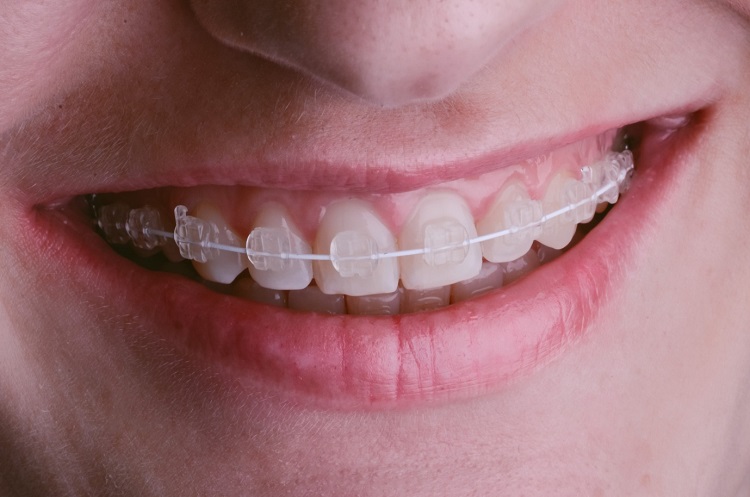Unfortunately, we’re not all blessed with a perfectly straight set of pearly whites. There are around 4 million people in America wearing braces to straighten their teeth at any one given time.
If you think that your child might need braces then you no doubt have a few questions about buying braces. As a parent, anything that makes your child nervous probably makes you a little nervous too, but don’t panic.
Let’s take a look at 7 factors that you should consider when buying braces for your child.
-
The Benefits of Braces
One of the most important things to be aware of is that having a straight set of teeth is not just about the aesthetics of a perfect smile. If you’ve been thinking about putting buying your child braces off, then there are a few things you should know.
Crooked and overcrowded teeth are harder to clean making you more prone to gum disease and cavities. Because they’re harder to clean they’re more likely to harbor bacteria, which can result in bad breath.
Protruding bottom teeth can rub against the top teeth and over time this can lead to the wearing down of tooth enamel. Crooked teeth even put extra stress on the jaw as well as your other teeth making them more prone to breaking.
More than anything is the psychological impact of crooked teeth. Crooked teeth can have a huge negative impact on an individual’s self-confidence. This can easily snowball into mental health problems later on.
-
How Bad Is Your Child’s Orthodontic Problem?
The first thing to assess is the severity of your child’s orthodontic problem. Having your child’s malocclusion assessed by an orthodontist will help you to choose the best braces for your child.
-
Types of Braces
Braces for children have come a long way, and there are several options for your child. However, it will all depend on the severity of your child’s malocclusion.
Ceramic Braces
Ceramic braces work in much the same as traditional braces, but they are clear so they are much less noticeable. If your child wants, the brackets and wires can even be colored.
Lingual Braces
If your child is really worried about the aesthetics of wearing braces then lingual braces might be the best fit for them. Lingual braces fit the inside of the teeth as supposed to the outside so they are completely out of sight.
Invisalign
If your child’s malocclusion isn’t too severe then they might be able to use an Invisalign brace. Invisalign is a plastic removable tray that is changed every two weeks.
It’s a great choice for kids because it’s easier to keep your teeth clean and enjoy some treats now and again while your teeth are straightening.
Self-Ligating Braces
Self-ligating braces don’t require tightening like ordinary braces. This means they’re a lot gentler on the teeth and a lot less painful.
-
Treatment Cost
Many people get so wrapped up in all the other factors that they forget to consider the cost. Most types of braces will cost between $3,000-$8,000. You’ll usually be expected to pay half the cost upfront with the rest split across the subsequent visits.
You should know that lingual braces are a little more expensive though and can cost between $10,000-$13,000.
-
When to Get Braces
Every parent wants their child to have a beautiful smile, but it’s important to get the timing right. If braces are fitted when your child’s adult teeth are still growing in then it’s more than likely that they’ll need a second treatment later on.
If you’re wondering when should kids get braces, then the ADA recommends that braces should be installed when children are between the ages of 8 and 14 to get the best results.
-
Pain and Discomfort
Braces are uncomfortable. There’s no way around that. Fortunately, the worst of the discomfort will only last a few weeks while your child adjusts to having them.
From when your child gets their braces first fitted they’ll be in initial discomfort as the teeth are pulled together along with additional chafing on the cheeks and tongue.
Every time the braces are tightened there will be discomfort, but it should fade after a couple of days.
-
Impact on Your Child’s Daily Life
One of the most important things to be aware of is how much braces will have an impact on your child’s life. Other than learning to live with additional discomfort, it’s going to be important to make some changes to your child’s eating habits.
Sticky foods and sweets are a big no as they can get stuck behind the wires of the braces and can be incredibly difficult to clean. You will also need to be wary about any foods that you have to bite in to such as apples.
Biting into something hard with braces puts pressure on the brackets which inadvertently puts pressure on the teeth so your child will certainly find this painful. It can also snap the wires between the brackets.
Your child will also need to brush up on their oral hygiene while they have braces. Braces mean that there’s more chance of food accumulating around the brackets and on the teeth. This can lead to tooth decay and gum disease, but it can also cause discoloration of the teeth. When the braces are removed the teeth can appear patchy.
A Final Word on Buying Braces
By considering these 7 factors when buying braces you will be able to choose the best braces for your child. It’s important to discuss your options with your dentist to make sure you get the braces for your child.
Wearing braces will be uncomfortable at times, but it’s important to stress the rewards your child will reap through life afterward. The health benefits and the boost in self-confidence will soon outweigh the discomfort of braces once the treatment is complete.
If you found this article useful and you’re looking for more health and lifestyle advice then be sure to take a look around the rest of our site.
 HammBurg Be informed with latest news, reviews, entertainment, lifestyle tips, and much more.
HammBurg Be informed with latest news, reviews, entertainment, lifestyle tips, and much more.




